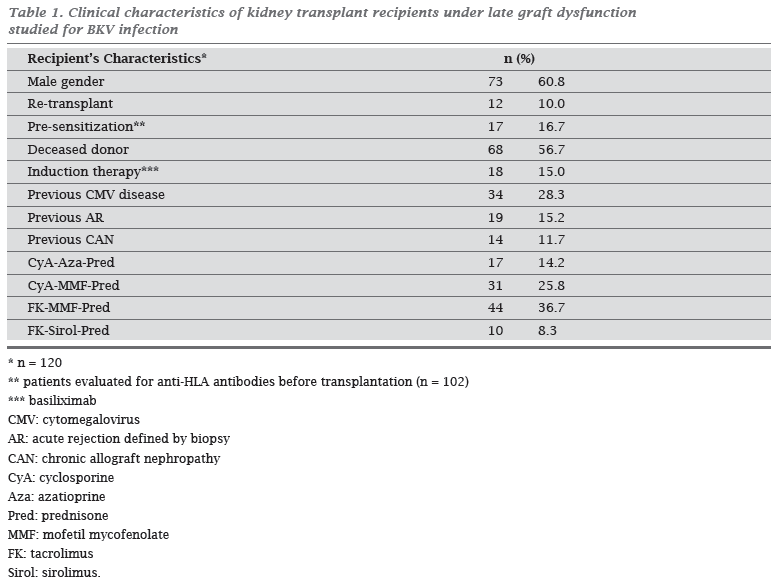INTRODUCTION: BKV nephropathy (BKN) causes kidney graft loss, whose specific diagnosis is invasive and might be predicted by the early detection of active viral infection. OBJECTIVE: Determine the BKV-infection prevalence in late kidney graft dysfunction by urinary decoy cell (DC) and viral DNA detection in urine (viruria) and blood (viremia; active infection). METHODS: Kidney recipients with >1 month follow-up and creatinine >1.5 mg/dL and/or recent increasing >20% (n = 120) had their urine and blood tested for BKV by semi-nested PCR, DC searching, and graft biopsy. PCR-positive patients were classified as 1+, 2+, 3+. DC, viruria and viremia prevalence, sensitivity, specificity, and likelihood ratio (LR) were determined (Table 2x2). Diagnosis efficacy of DC and viruria were compared to viremia. RESULTS: DC prevalence was 25%, viruria 61.7%, and viremia 42.5%. Positive and negative patients in each test had similar clinical, immunossupressive, and histopathological characteristics. There was no case of viremia with chronic allograft nephropathy and, under treatment with sirolimus, patients had a lower viruria prevalence (p = 0.043). Intense viruria was the single predictive test for active infection (3+; LR = 2.8).1,6-4,9 CONCLUSION: DC, BKV-viruria and -viremia are commun findings under late kidney graft dysfunction. Viremia could only be predicted by intense viruria. These results should be considered under the context of BKN confirmation.
BK virus; decoy cells; kidney transplantation; PCR; viremia; viruria


